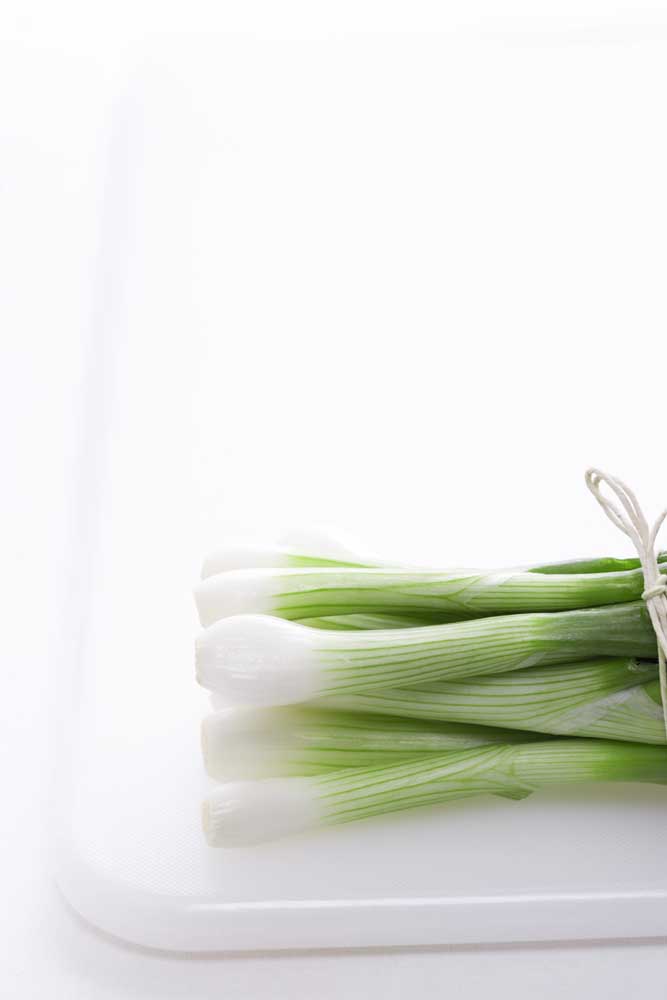early flavors
Published 12:00 am Saturday, June 7, 2014

- Bunch of spring onions on white chopping board
by Annissa Anderson for The Bulletin Special Projects
Photos by Kari Mauser
Trending
Warm, sunny days mean more than a shift to summer recreation. They also signal the start of local cooking. Early June marks the beginning of farmers markets in Central Oregon, when the first local crops of fruits and vegetables are harvested and sold the very same day. To savor the freshest produce of the season, it helps to know which of these “early bloomers” are at their peak right now.
Here are some of the season’s best picks to cook with and enjoy.
Spring Onions
Spring onions are simply immature (green) onions that have been harvested before they are full size. Often confused with scallions, spring onions are identified by a slightly curved white base that has not been fully developed into a bulb and green leaves that are long and straight. The straighter-edged scallions are even younger and can be used in the same manner, for milder results.
Spring onions — at their peak in spring and summer — lend a unique flavor to both raw and cooked dishes. Use them fresh in salads, sandwiches and salsas, grilled whole to accompany meats, or sautéed as a distinctive flavor base for soups or stews. Spring onions can also be substituted for leeks in many recipes, such as potato-leek soup. Caramelized spring onions — cooked at length over low heat — add intense, earthy flavor to eggs, pizza or savory pies.
When choosing spring onions, look for those with crisp, bright green leaves and a firm white base. They can be stored in a plastic bag in the refrigerator for up to several days.
Trending
Radishes
Radishes, whose name comes from the Latin radix, meaning root, are in fact the root from a plant in the mustard family. Some of the first vegetables to appear at farmers markets, radishes come in a rainbow of colors and a variety of shapes and sizes. Colored in shades from white to red, pink, purple and even green, radishes can be round, oval or even cone-shaped like a parsnip. Depending on the plant’s growing conditions, their flavor may range from mild to extremely peppery.
Though always visually appealing, a radish’s inner beauty shines when thinly sliced or grated to show off its subtle candy striping. Sliced radishes are excellent in salads and can add color and pep to sandwiches and other dishes. But whole or quartered radishes — especially large, sweet daikon radishes — are also surprisingly tasty when roasted or sautéed in butter, allowing their flavor to mellow and texture to soften.
When buying radishes, make sure they are crisp and firm when squeezed, with bright green tops. Radishes keep well in the refrigerator for several days, but remove and discard leaves before storing. Wash and trim root ends just before using.
Rhubarb
Rhubarb, though generally eaten like a fruit, is botanically a vegetable. And while the stalks may resemble a rose-hued version of celery, its flavor is anything but mild. Consuming raw rhubarb is not advised, however when cooked and combined with a considerable amount of sweetener, it is sublime.
Though sometimes referred to as the pie plant, rhubarb has far more uses than playing second fiddle to strawberries in pie. Cooked rhubarb makes a colorful, sweet-tart filling for many kinds of baked goods — including pies — but also cakes, cobblers and muffins. A chunky compote or silky sauce of sweetened, cooked rhubarb is a perfect complement to rice pudding, yogurt and ice cream. And rhubarb-flavored simple syrup adds infinite possibilities to cocktails.
Choose crisp rhubarb stalks that are brightly hued; the deeper colored ones will be sweeter. Never eat the leaves as they are toxic. For storing, discard the leaves and store the stalks in a plastic bag in the refrigerator for up to three days. Wash the stalks just before using.
Spring Greens
Spring and early summer produce the best greens of the growing season. At farmer stands or farmers markets, look for tender baby greens sold individually, like spinach, arugula or mizuna (a spicy Japanese salad green), and in mesclun (salad green mix). Early in the season is also the best time to try refined Chinese mustard greens (or elegant greens mix), as the young leaves are crisp with a dark green color.
To get the most out of spring greens, treat them with care. Best eaten raw in salads, make sure to coat evenly and lightly with dressing. Instead of pouring dressing over a salad, try putting a small amount in the bottom of a bowl, adding salad ingredients, and lightly combining the salad with your own clean hands so as not to bruise the tender leaves. If wilting or sautéing greens, again use a small amount of oil and quickly wilt spinach, arugula or mustard greens. Use other flavors, such as garlic, mustard or vinegar, sparingly in order to accent, not overpower, their delicate flavor.
Make sure greens are fresh and crisp when purchased and use as soon as possible. If storing, keep in the refrigerator in a plastic bag. Always rinse and dry greens thoroughly before using.








